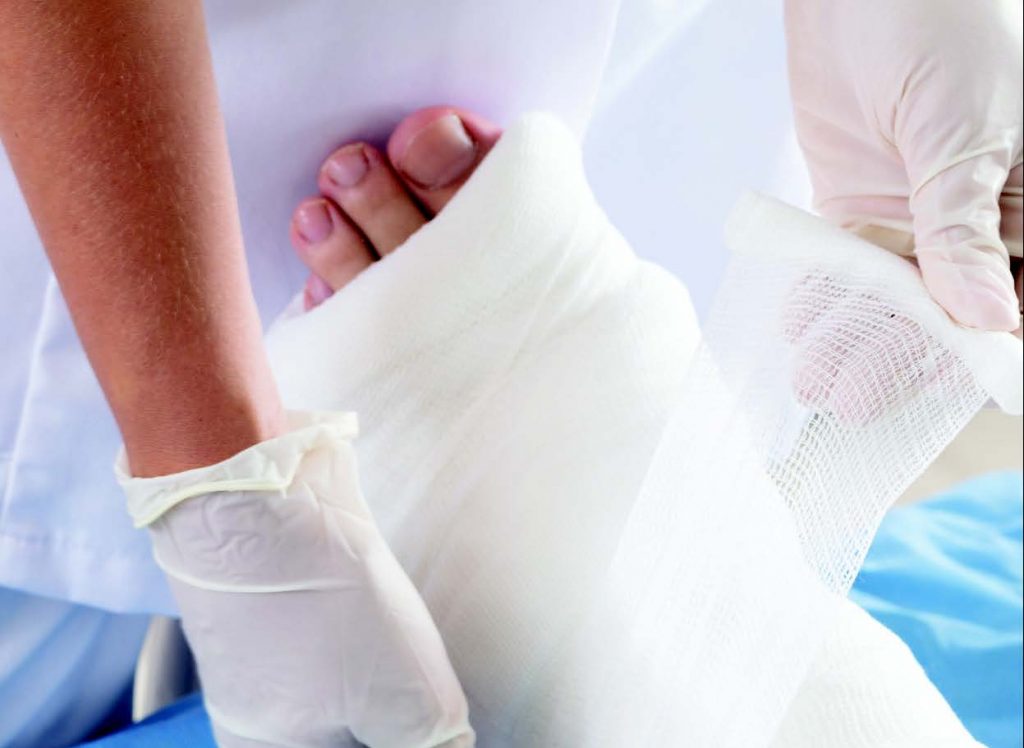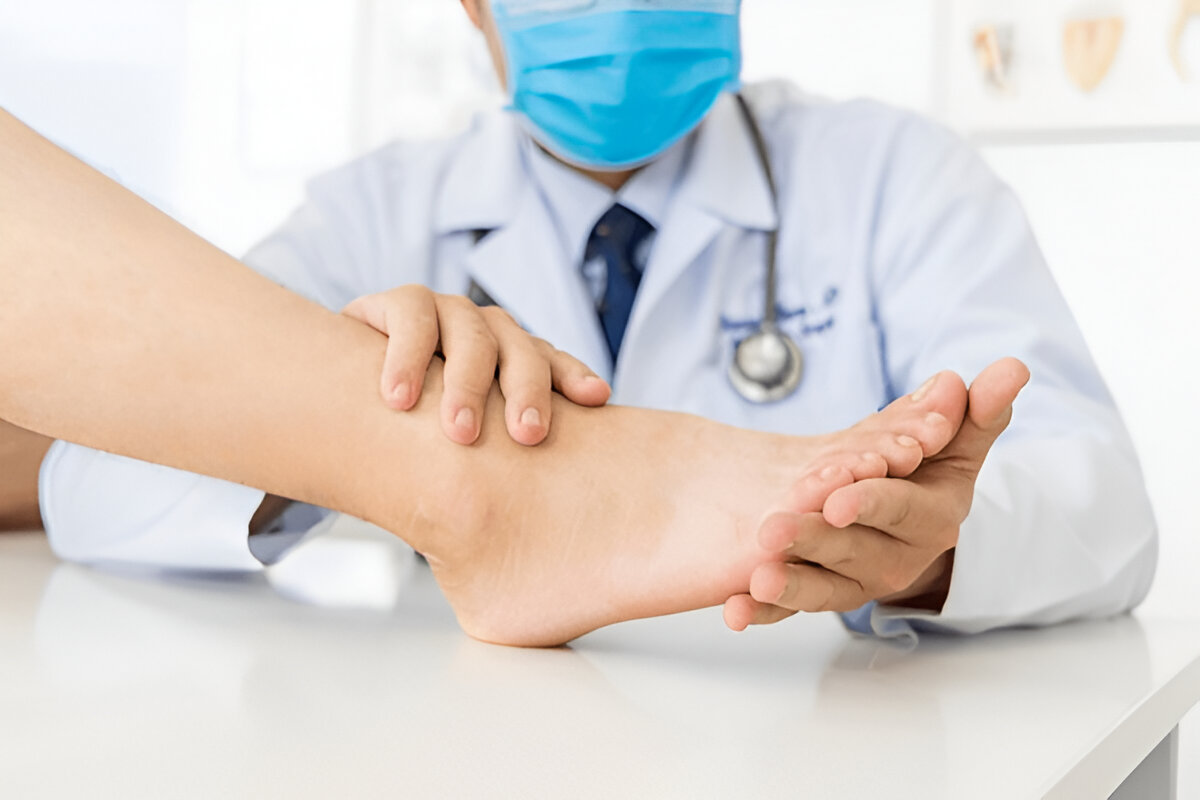Living with diabetes is a daily balancing act, but one of its most dangerous complications often hides in plain sight: foot health. Many people underestimate how quickly a minor blister or small wound on a diabetic foot can spiral into a severe ulcer, deep infection, or even amputation. In fact, it’s estimated that every 30 seconds, someone in the world loses a lower limb due to complications of diabetes. The stakes couldn’t be higher.
The feet endure daily stress, and in diabetics, reduced circulation and nerve damage (neuropathy) mean injuries often go unnoticed. This silent threat turns the ordinary act of walking into a potential medical crisis. The CDC reports that over 50% of diabetic foot ulcers become infected, and nearly 20% of these infections ultimately require an amputation. These sobering numbers prove why diabetic foot care is critical not only for quality of life but also for preventing life-changing consequences.
As a Toms River podiatrist with years of experience treating diabetic patients, I’ve seen how proactive care and early detection make all the difference. This article explores why diabetic foot care deserves your full attention, practical steps you can take, and the life-saving results of staying vigilant.
The Stark Statistics: Why Diabetic Foot Care Is Critical
One of the most compelling reasons why diabetic foot care is critical is the sheer volume of people affected—and the severe outcomes they face. Worldwide, over 422 million people live with diabetes. In the United States alone, more than 37 million adults are diabetic, and nearly half have some degree of diabetic neuropathy. Once neuropathy sets in, patients often lose sensation in their feet, meaning a small pebble in a shoe can cause significant tissue damage without being felt.
The numbers behind diabetic foot complications are staggering. Up to 25% of diabetics will develop a foot ulcer during their lifetime. Among those with ulcers, around 20% will experience an amputation. Shockingly, following an amputation, the 5-year mortality rate can be as high as 70%, a number worse than many forms of cancer. These figures are a stark reminder of how serious diabetic foot care truly is.
Here’s a table that highlights key facts every diabetic patient should know:
| FACT | DETAILS |
|---|---|
| Global Diabetes Cases | Over 422 million |
| US Diabetes Cases | ~37 million |
| Risk of Foot Ulcers | Up to 25% in lifetime |
| Infection Risk from Ulcers | ~50% become infected |
| Amputation Risk from Ulcers | ~20% require amputation |
| 5-Year Mortality Post-Amputation | Up to 70% |
These numbers are not just statistics—they represent real lives impacted every day. It’s why consistent foot care and professional medical guidance are crucial for anyone with diabetes.

How Neuropathy Raises the Stakes
One of the primary reasons diabetic foot care is critical lies in a condition called peripheral neuropathy. When high blood sugar damages nerves, particularly in the feet, patients lose their ability to feel pain, heat, or pressure. Without this natural warning system, injuries go unnoticed. You could be developing a blister, a callus, or even a deep ulcer and remain completely unaware until the wound becomes infected or emits a foul odor.
In my Toms River practice, I’ve seen patients come in with advanced ulcers that they didn’t even know existed. Many express disbelief because the wounds are painless. This is the dangerous paradox of neuropathy—it makes the feet vulnerable to serious injury while masking symptoms that would normally drive someone to seek help.
Neuropathy also affects sweat glands, causing the skin on diabetic feet to become dry and cracked. These tiny cracks can become portals for bacteria, leading to infections that spiral out of control. Ultimately, neuropathy robs patients of the body’s natural early-warning signals, making daily foot inspections and professional checkups absolutely essential.
Why Poor Circulation Makes Healing Harder
Even if a diabetic patient does detect an injury on time, another significant reason diabetic foot care is critical is poor circulation, medically known as peripheral arterial disease (PAD). Diabetes damages blood vessels, leading to reduced blood flow in the legs and feet. This lack of oxygen-rich blood means wounds heal much slower, if at all.
When a cut or ulcer struggles to heal, it’s far more likely to become infected. I often see patients in Toms River with small ulcers that have lingered for weeks or months because the body simply can’t supply enough nutrients and immune cells to the wound site. Without aggressive medical intervention, these wounds become breeding grounds for serious infections that may spread to bones, ultimately necessitating amputation.
Poor circulation also means antibiotics and other medications have a harder time reaching infected tissue. In advanced cases, surgeons may have no choice but to remove the affected part to save the patient’s life. This is why diabetic foot care requires a proactive approach—once circulation problems begin, every minor injury poses an outsized threat.
The Role of Foot Inspections in Prevention
A vital reason why diabetic foot care is critical is that daily self-inspection helps catch minor problems before they become severe. A daily foot check takes only a few minutes but can literally save a limb. Patients should examine their soles, heels, toes, and between the toes for cuts, redness, swelling, or signs of infection.
In my Toms River clinic, I advise patients to use a mirror to see the bottom of their feet or ask a family member for help. Any suspicious change—such as a sore, blister, or change in skin color—should prompt a call to your podiatrist immediately. Remember, even tiny injuries can spiral into deep ulcers if left untreated.
I encourage my patients to look for these red flags during daily checks:
-
Cuts or cracks in the skin
-
Blisters or sores
-
Changes in skin color or temperature
-
Ingrown toenails
-
Swelling or redness
-
Unusual odors
Patients who perform regular checks often catch problems early, allowing for quick treatment and significantly reducing the risk of complications.
Choosing the Right Footwear for Diabetic Health
Another reason why diabetic foot care is critical is that wearing the wrong shoes can lead to ulcers, blisters, and lasting damage. Diabetic feet are more prone to injury because of poor sensation and fragile skin. Even a small seam or pressure point inside a shoe can trigger significant wounds.
Proper footwear for diabetics should provide ample room for toes, cushioned soles to absorb shock, and minimal internal seams to prevent rubbing. Specialized diabetic shoes and insoles are designed to reduce pressure and improve weight distribution across the foot. These simple measures help prevent the development of calluses and ulcers that could eventually lead to infection and amputation.
I always advise patients in Toms River to avoid walking barefoot—even at home—because sharp objects or rough surfaces can create injuries that go unnoticed. Shoes should be checked daily for pebbles, debris, or damage that could injure the foot. Investing in high-quality, professionally fitted footwear is not just a matter of comfort but a crucial part of diabetic foot survival.
Understanding the Warning Signs of Trouble
An essential reason why diabetic foot care is critical is recognizing when something is wrong. Early intervention can mean the difference between a minor treatment and major surgery. Some patients wrongly assume that if there’s no pain, there’s no problem—but diabetic foot issues often remain silent until severe.
Symptoms that warrant immediate medical attention include:
-
Open sores that do not heal
-
Blackened tissue, which can signal gangrene
-
Swelling that doesn’t resolve
-
Persistent warmth or redness
-
Pus or drainage from a wound
-
Foul odor
I always remind my patients that diabetic feet should never be ignored. Even minor skin changes can indicate a deeper problem, like infection or circulatory failure. Swift medical evaluation is essential to prevent catastrophic outcomes.
Professional Care: How a Podiatrist Helps Save Limbs
A core reason diabetic foot care is critical is the specialized expertise a podiatrist offers. While primary care physicians play a crucial role, podiatrists bring focused knowledge in diagnosing and treating foot and ankle conditions. In Toms River, we see countless diabetic patients whose proactive podiatric care has kept them out of the hospital and on their feet.
Routine podiatric visits often involve:
-
Nail and callus care
-
Wound evaluations
-
Custom orthotics fittings
-
Circulation assessments
-
Neuropathy screenings
Podiatrists are also trained in advanced wound care techniques, such as debridement, specialized dressings, and the use of biologic grafts to promote healing. We work as part of a multidisciplinary team, coordinating with endocrinologists, vascular surgeons, and wound care centers to ensure comprehensive care. Regular visits are one of the most powerful tools in preventing amputations and preserving quality of life for diabetics.
Managing Blood Sugar: The Foundation of Foot Health
One of the biggest reasons why diabetic foot care is critical is that no foot-saving measure can succeed without excellent blood sugar control. High glucose levels damage blood vessels, impair the immune system, and slow down wound healing. Keeping blood sugar in target ranges is the first step toward preventing neuropathy and poor circulation—the twin culprits behind most diabetic foot problems.
Patients should:
-
Monitor blood glucose levels daily
-
Follow prescribed diets
-
Exercise regularly (while protecting the feet)
-
Keep regular appointments with their healthcare team
It’s not uncommon for patients to feel frustrated when foot wounds won’t heal despite proper dressings and antibiotics. Often, elevated blood sugars are the hidden factor delaying recovery. In my Toms River practice, I counsel patients that lowering A1C levels not only protects their eyes and kidneys but directly reduces the risk of devastating foot complications.

The Emotional Toll and Importance of Mental Health
Beyond physical dangers, another reason diabetic foot care is critical is its significant impact on mental health. The constant vigilance required to protect the feet can be exhausting, leading to anxiety and depression. Patients fear ulcers, hospital stays, or even losing a limb, and these emotional burdens can diminish quality of life.
I’ve seen patients in Toms River withdraw from social activities out of fear of injury or embarrassment about visible foot wounds. Depression and diabetes are strongly linked, and mental health struggles can also undermine adherence to daily care routines. It’s crucial for patients to speak openly with their doctors about any feelings of anxiety or sadness.
Mental health professionals, diabetes educators, and support groups play a crucial role in helping patients cope. Diabetic foot care isn’t just about preventing wounds—it’s about preserving a patient’s overall well-being, both physically and emotionally.
Why Diabetic Foot Care Is Critical: The Path to Prevention and Hope
Ultimately, the reason why diabetic foot care is critical is because it saves lives and limbs. The statistics are sobering, but they don’t have to be your fate. With the right education, daily self-checks, professional care, and meticulous blood sugar control, diabetic patients can avoid many of the devastating complications that threaten their mobility and independence.
As a Toms River podiatrist, I’m passionate about helping patients preserve their feet and their freedom. Diabetic foot care isn’t merely a medical necessity—it’s an essential part of living a full, vibrant life despite diabetes. The power to prevent ulcers, infections, and amputations lies in your hands, and you deserve a care team committed to keeping you on your feet for years to come.
GSFA Group – Your Partner in Diabetic Foot Care
At GSFA Group, we understand why diabetic foot care is critical and are dedicated to providing comprehensive, compassionate care for every patient. Dr. Manooj Prasad, a board-certified foot and ankle surgeon, leads our team with expertise in advanced wound care, limb salvage, and minimally invasive surgical solutions.
If you or someone you love is living with diabetes, don’t wait for a problem to become a crisis. Let us help you protect your feet—and your future. Schedule an appointment with GSFA Group today and take a proactive step toward healthy, pain-free living.
Contact Information
Don’t wait until a minor foot issue becomes a major problem. Contact us today for specialized care tailored to your needs.
Toms River Office
📍 664 Commons Way Building 1
Toms River, NJ 08755
📞 Phone: (732) 557-9900
📧 Email: gsfagroup@gmail.com
Belleville Office
📍 1 Clara Maas Drive
Belleville, NJ 07109
📞 Phone: (973) 450-3035
🌐 Website: gsfagroup.com

0 Comments